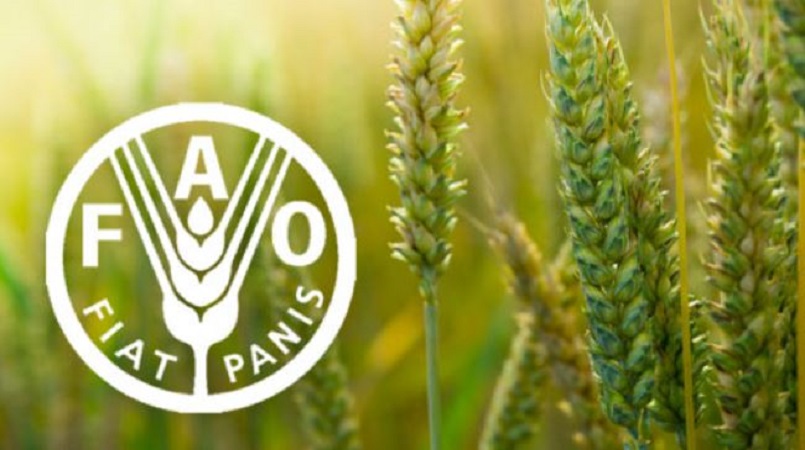
Small Island Development States (SIDS) such as Fiji are facing a man-made crisis that threatens the health of families and the wealth of its 34 member nations,” according to Dr Tim Martyn, Policy Officer, UN Food and Agriculture Organisation(FAO) Country
To contribute towards a resolution of the crisis, a major meeting is taking place in Suva at the Grand Pacific Hotel, from 01 – 03 November.
The meeting is a result of a year-long process in developing a draft Global Action Plan (GAP) to address the growing crisis in food and nutrition related challenges in Small Island Developing States (SIDS) the meeting is facilitated by FAO.
FAO’s primary purpose is to achieve “food security for all.” It recently opened an office in Suva with its regional headquarters in Samoa.
Up to 40 representatives from the agriculture and nutrition sectors of the three SIDS regions are expected to attend the three-day meeting to review and update the draft Global Action Plan.
NCDs or non-communicable diseases are the number one killer in the world with over 38 million deaths a year while ‘hidden hunger’ or micronutrient deficiency hits hardest at young children and pregnant women.
In the Pacific alone, on average, NCDs account for 70% of all deaths, in Fiji that number is 80%; while a third of the regional population suffers from anaemia, and a quarter from vitamin A deficiency. “But the tragedy is that most of these deaths are preventable,” he said.
“Diet is a major cause of NCDs and ‘hidden hunger’. We literally are what we eat.
“To prevent serious diseases we need access to good nutritious food, but this is often not readily available, or affordable, for many. People are making choices to buy the food they can afford – and too often what is affordable is what is making them sick.
“It’s not just a matter of improved education or healthcare – we need a serious investment in programmes to improve the access of at-risk households to nutritious foods, and to lower the cost of eating healthily. Because what we’re facing is nothing short of a disaster.
“In Fiji, almost a quarter of the population suffers from diabetes – one outcome is an amputation conducted in one of Fiji’s hospitals every twelve hours. A third of Fiji’s population is now considered obese, which puts many at a health risk.
“In the Pacific Islands the statistics are just as startling. Fifty percent of the male population of Tonga is estimated to be obese, the highest prevalence out of 188 countries worldwide; and over 45 percent of American Samoa’s population have diabetes. Indeed, the Pacific has the highest rate of diabetes in the world.”
Dr Martyn said that this is not an inevitable process or a natural one, but the result of policies and investment decisions over the course of a generation that has led SIDS to this crisis point.
“SIDS is moving towards addressing these food and nutrition challenges. But there is not a large window so we have to get it right. The key is to bring actors from all the different sectors – in particular from health, education as well as agriculture – to develop a joint response.”
The three SIDS regions are: Atlantic, Indian Ocean, Mediterranean and South China Sea (AIMS), the Caribbean, and the Pacific.
The Global Action Plan was developed as a direct response to the food and nutrition challenges that resulted from the Heads of State and Government and high-level representatives adopting the SIDS Accelerated Modalities of Action (SAMOA) Pathway in September 2014.
It was the recommendation of SAMOA that FAO facilitate a special meeting on food and nutrition security in SIDS to develop an action programme to address the food and nutrition challenges they face, with the Tuesday meeting the result.
The draft Gobal Action Plan set as its aims to end hunger, achieve food security, improve nutrition and promote sustainable agriculture while supporting SIDS in advancing the 2030 sustainable development agenda.
Specifically, it responds to the food and nutrition challenges faced by SIDS, including:
•Undernourishment - The most recent data of FAO indicates that many of the SIDS Islands have achieved undernourishment levels of less than 5 percent. These include Barbados, Cuba and Dominica in the Caribbean; Fiji, Samoa and Kiribati in the Pacific.
•Access to food - Poverty and unemployment are the main constraints of access to food in SIDS. The youth unemployment rate in most SIDS is higher than the average of the world, 58.7% in Haiti.
•Food import dependence - In SIDS countries, food imports, as opposed to national food production, are by far the largest source of food. It is estimated that in 1990, approximately 45 percent of food available in the Caribbean was imported, that increased to 60 percent in 2011.
•Food utilisation - Food utilization in SIDS has been characterized by nutritionally poor food choices. A nutrition transition has taken place in most of these Islands contributing to an increased prevalence of chronic, non-communicable diseases (NCDs). Much of the imported food available is calorie-dense, high-fat, high-sweetener food.
•Stability of food supply and access - Instability and vulnerability constantly undermine efforts to advance food and nutrition security in the region... countries are vulnerable to natural disasters, which adversely impact not only economic sectors (agriculture, tourism, manufacturing, industry and commerce), but also social sectors (housing stock and settlements, health, education and infrastructure), and food and nutrition security.
The meeting will recommend next steps to continue support and collaboration as it moves closer to a final document.
Photo: PACNEWS
